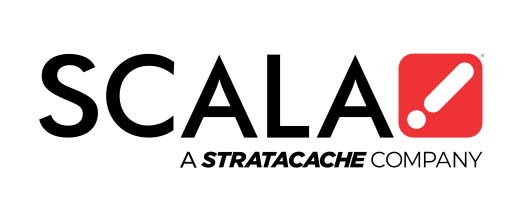The adoption of digital menu boards has increased significantly in recent years as restaurant owners realised their effectiveness in influencing purchases and increasing revenue. In 2020, quick service restaurants using digital menu boards accounted for up to 20% of the digital signage industry, and 29.5% of restaurant customers said that digital menus are more likely to influence their purchase of a product.
We discuss the key benefits of digital menu boards in this article.


The brain processes images 60,000 times faster than text, and often creates an emotional or sensory connection to an image that is immediate. Digital menu boards can stimulate interest and appetite with high-quality photos of offered menu items. With the addition of movement, a short video clip can further grab customers’ attention and entice them even more.
Digital screens have the capability of displaying complimentary items (e.g., adding a side dish or drink, ‘up-sizing’ the order, etc.) during the ordering process and represent a golden opportunity for promoting upselling. In fact, according to recent figures, digital menu boards can contribute to an increase in sales by a staggering 64% in some restaurants.
2. Elevate the customer experience
The process of finding and ordering what you want can play a major role in customer satisfaction at restaurants, grocery stores and other retail and hospitality environments. In fact, nearly three-quarters (74 percent) of restaurant guests say that an easy-to-read menu is their top priority for having a good experience. A digital display can bring restaurant menus to life with videos and animations and is the perfect answer in elevating the ordering experience. A digital screen strategically placed outside your restaurant is more likely to draw in someone as compared to a static menu.
3. Easily update new menu offerings and prices
Digital menu boards provide businesses the flexibility and ease of automatically managing menu items and price points remotely based on supply and demand, promotional campaigns, and upcoming events. Optimal price points and smart promotion of high-demand items help to drive sales and increase profits.
4. Reduce perceived wait times
Digital signage has been proven to reduce perceived wait times at checkouts by as much as 35%. By featuring mouth-watering and engaging content, digital menu boards in restaurants provide something interesting for customers to look at while waiting, hence making the time seem to pass faster.
Digital menu boards can also help customers make faster decisions about what to order by providing a realistic image of what to expect, which speeds up the line.
5. Reduce costs
Nearly 70% of restaurants that start using electronic menu boards find that they make their investment back within the first 18 months. Digital menu boards eliminate the need for printing, hence helping to reduce costs in the long run. Furthermore, digital menu boards enable an endless launch of marketing and promotional campaigns, helping businesses to get the most bang for their buck.
Conclusion
The benefits of digital menu boards far outweigh the aesthetics of the board itself, and extend to improved customer satisfaction, increased revenue and additional efficiency. Utilising digital menu boards also helps to conserve the environment by eliminating the need for printing.
Scala’s marketing technology and restaurant digital signage offers a bespoke solution that will help restaurants address business goals like operational efficiency, convenience and improved speed of service.
Esther Chew is the Sr. Manager – Corp Comm & Marketing at STRATACACHE Asia-Pacific and is responsible for developing and implementing the internal and external communications strategy and programmes across Asia-Pacific. She drives the company’s corporate image and brand messaging through integrated and strategic communications leveraging various platforms such as executive communication, client communication, digital marketing, media relations and B2B events.


